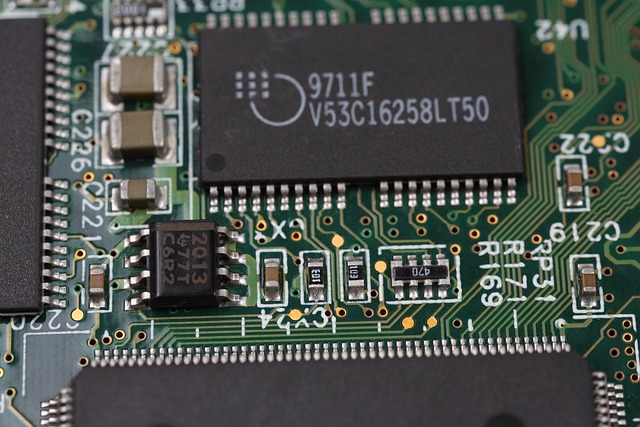What Are the Latest Advancements in Wireless Charging?
Recent strides in wireless charging have pushed boundaries with the introduction of long-range wireless charging. Unlike traditional methods that require direct contact, new systems can power devices up to several feet away. This is akin to having a wireless charger built into your desk, where your phone automatically starts charging as soon as you place it within range.
Another exciting development is the rise of bidirectional wireless charging. This technology allows your phone to not only charge itself but also power other devices, like your smartwatch or earbuds. It’s like having a power bank built into your phone, enabling you to share battery life on the go.
Also worth noting is the enhancement of charging speeds. Innovative materials and improved coil designs are pushing charging speeds to new heights, making wireless charging nearly as fast as wired connections. Imagine dropping your phone on the charging pad and it’s juiced up in no time, just like plugging it in.
Finally, there’s a growing focus on making wireless charging more eco-friendly. Newer systems are designed to be more energy-efficient, reducing power waste and benefiting both your wallet and the environment.
These advancements are setting the stage for a future where wireless charging becomes as natural as breathing. The landscape is evolving, turning once-imaginary technology into a reality that’s set to transform how we power our devices.
Revolutionizing Power: The Latest Breakthroughs in Wireless Charging Technology
So, what’s fueling this revolution? It’s all about improved efficiency and range. New wireless chargers now operate over greater distances. This means you don’t have to be in direct contact with the charger anymore. Picture this: your phone could be charging while sitting on your desk, without being directly plugged in. This isn’t just a futuristic fantasy; it’s happening now, thanks to advancements in resonant inductive coupling and radio frequency technology.
What’s more, the latest wireless chargers are faster than ever. Early models were known for their sluggish charging speeds, but newer versions are closing the gap with wired chargers. It’s like upgrading from dial-up to high-speed internet—only it’s your phone getting the boost. These improvements aren’t just about speed; they also focus on smart technology, like adjusting the power output based on the device’s needs, making the process safer and more efficient.
Additionally, the integration of wireless charging into everyday objects is expanding rapidly. Imagine your furniture, like a coffee table or nightstand, equipped with wireless charging capabilities. This seamless integration into daily life means that keeping your devices charged will soon be as easy as setting them down.
These breakthroughs are reshaping how we think about power. The future is looking bright, and it’s wireless.
From Qi to Quantum: How New Wireless Charging Standards Are Transforming Device Powering
Qi, the groundbreaking standard that brought us the convenience of wireless charging, has set the stage for a revolution. It’s like the trusty old friend who introduced us to a world of wireless freedom. Qi works using electromagnetic fields to transfer energy between a charging pad and your device. Imagine it as a gentle, invisible handshake that transfers power without a single wire in sight.
But the journey doesn’t stop there. The horizon now glows with the promise of quantum wireless charging—a futuristic leap that’s pushing boundaries further. Unlike Qi, which charges devices through close contact, quantum wireless charging envisions a world where power can be transferred over greater distances. Picture this: your device charging while it’s across the room. It’s not science fiction; it’s the next big step in how we’ll power our gadgets.
This new era of wireless charging is not just about convenience; it’s about making our lives smoother and more efficient. Quantum charging could potentially eliminate the need for multiple cables and charging stations cluttering our spaces. It’s akin to moving from horse-drawn carriages to sleek, self-driving cars—an incredible leap that redefines what’s possible.
As we transition from Qi to quantum, we’re stepping into a world where powering our devices becomes as effortless as setting them down. It’s a thrilling glimpse into a future where technology doesn’t just keep up with our needs but anticipates them.
Wireless Charging Gets a Boost: Top Innovations Shaping the Future
One major advancement is the development of faster wireless charging technologies. Remember the days when charging your phone wirelessly took forever? Those days are fading away. Newer systems are delivering power at speeds that rival traditional wired methods. This means you can get a substantial battery boost in just minutes, rather than hours.
Another exciting innovation is the concept of multi-device charging pads. Picture this: you can place your smartphone, earbuds, and smartwatch all on one sleek pad and have them charge simultaneously. This eliminates the clutter of multiple chargers and cables, streamlining your space and simplifying your life.
Then there’s the breakthrough in charging distance. Early wireless charging systems required your device to be in direct contact with the charging pad. Now, advancements are allowing you to charge your device even if it’s a few feet away from the pad. This means greater flexibility and freedom to use your phone while it’s charging, without being tethered to a specific spot.

How New Materials Are Enhancing the Efficiency of Wireless Charging Systems
At the heart of this technological leap is the development of advanced conductive materials. These materials are like superhighways for electrical energy, allowing it to travel more efficiently than ever before. Think of them as smooth, well-paved roads compared to the bumpy, congested ones of older technologies. This means less energy is wasted, and your device charges up faster.
Another game-changer is the use of high-performance ceramics in charging pads. These aren’t your everyday ceramics but specially engineered ones that excel at heat management and energy transfer. Imagine using a sponge to soak up a spill—the right sponge makes all the difference. Similarly, these ceramics help soak up and transfer energy efficiently, reducing heat loss and improving overall performance.
New magnetic materials also play a crucial role. They boost the magnetic fields used in wireless charging, enhancing power transfer. Picture a magnet that’s exceptionally strong and precise—these materials make sure that the energy reaches your device with pinpoint accuracy, minimizing any loss.

So, with these innovations, the future of wireless charging is looking bright. New materials are setting the stage for quicker, more efficient charging experiences, pushing the boundaries of what’s possible.
Beyond the Pad: The Emergence of Wireless Charging for Electric Vehicles
How does this magical process work? Picture it like this: wireless charging for EVs relies on electromagnetic fields to transfer energy from a charging pad embedded in the ground to a receiver on your car. It’s a bit like how your phone charges on a Qi pad but on a grander scale. This technology eliminates the need for physical connections, making the whole process smoother and more convenient.
The beauty of wireless charging lies in its simplicity. You don’t need to worry about plugging in each time you park. It’s especially handy for those who use their EVs for daily commutes and want to ensure they’re always charged up without any extra effort. Just imagine the ease of arriving at work or home, and your car is automatically charging as you go about your day.
Moreover, wireless charging technology is not just about convenience; it’s also about the future of infrastructure. As this tech evolves, it paves the way for dynamic charging lanes on highways, where your car could charge while driving. Yes, you heard that right—no more waiting around for your car to charge!
In essence, wireless charging is setting the stage for a more integrated and user-friendly electric vehicle ecosystem. It’s more than just a trend; it’s a glimpse into a smarter, more connected future.
